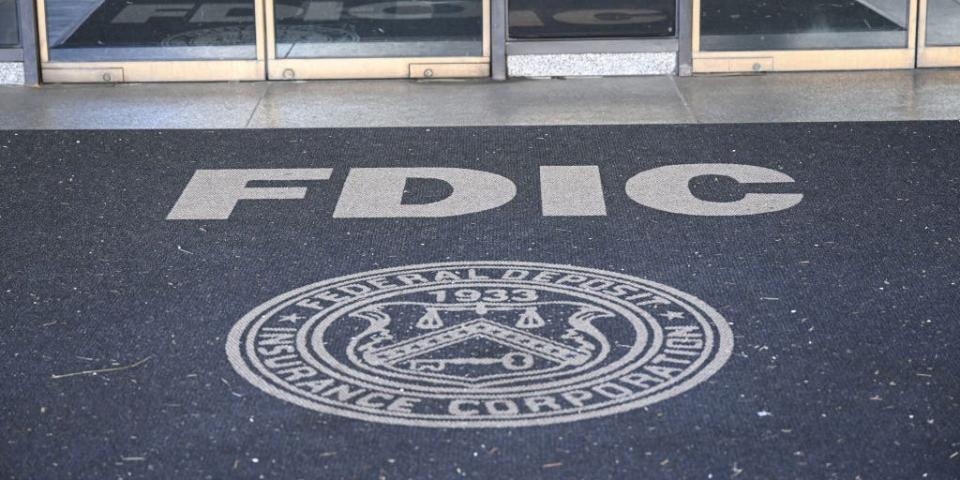Higher interest rates have created 63 'problem banks' and $517 billion in unrealized losses, FDIC says

High interest rates continue to put pressure on the US banking system.
The FDIC said the US banking system has 63 "problem banks" and is sitting on $517 billion in unrealized losses.
Upward pressure on mortgage rates has significantly hurt the banking sector.
More than a year after the downfall of Silicon Valley Bank, higher interest rates are still putting pressure on the US banking system.
According to the Federal Deposit Insurance Corporation's first quarter report, the US banking system is sitting on a collective $517 billion in unrealized losses and has 63 "problem banks."
Those losses have been sparked primarily by a surge in interest rates over the past two years, which have driven down the price of fixed-income securities held by banks.
Unrealized losses held by banks increased by $39 billion in the first quarter relative to the fourth quarter of 2023.
"Higher unrealized losses on residential mortgage-backed securities, resulting from higher mortgage rates in the first quarter, drove the overall increase," the FDIC said.
Mortgage rates have been on the rise since the start of the year, with the 30-year fixed mortgage rate rising from about 6.6% in early January to just over 7% today, according to data from Freddie Mac.
"This is the ninth straight quarter of unusually high unrealized losses since the Federal Reserve began to raise interest rates in the first quarter 2022," the FDIC said.
From 2008 through 2021, the US banking system's unrealized losses and gains on investment securities ranged from as much as $75 billion in losses to just under $150 billion in gains.
Meanwhile, the 63 problem banks in the first quarter represent an increase of 11 banks from the fourth quarter of last year. The FDIC categorizes problem banks as banks that have a CAMELS composite rating of four or five.
The CAMELS rating measures the financial strength of a bank through six categories, including capital adequacy, assets, management capability, earnings, liquidity, and sensitivity.
The rating system ranges from one through five, with one representing a high-quality bank requiring the least degree of concern, and five representing the weakest performance and requiring the highest degree of supervisory concern.
Total assets held by the 63 problem banks in the first quarter was $82 billion, according to the FDIC, suggesting that most of the problem banks are smaller in size.
While there has been an increase in problem banks due to higher interest rates, it shouldn't be a cause for concern just yet.
"The number of problem banks represent 1.4% of total banks, which is within the normal range for non-crisis periods of one to two percent of all banks," the FDIC said.
Read the original article on Business Insider

 Yahoo Finance
Yahoo Finance 